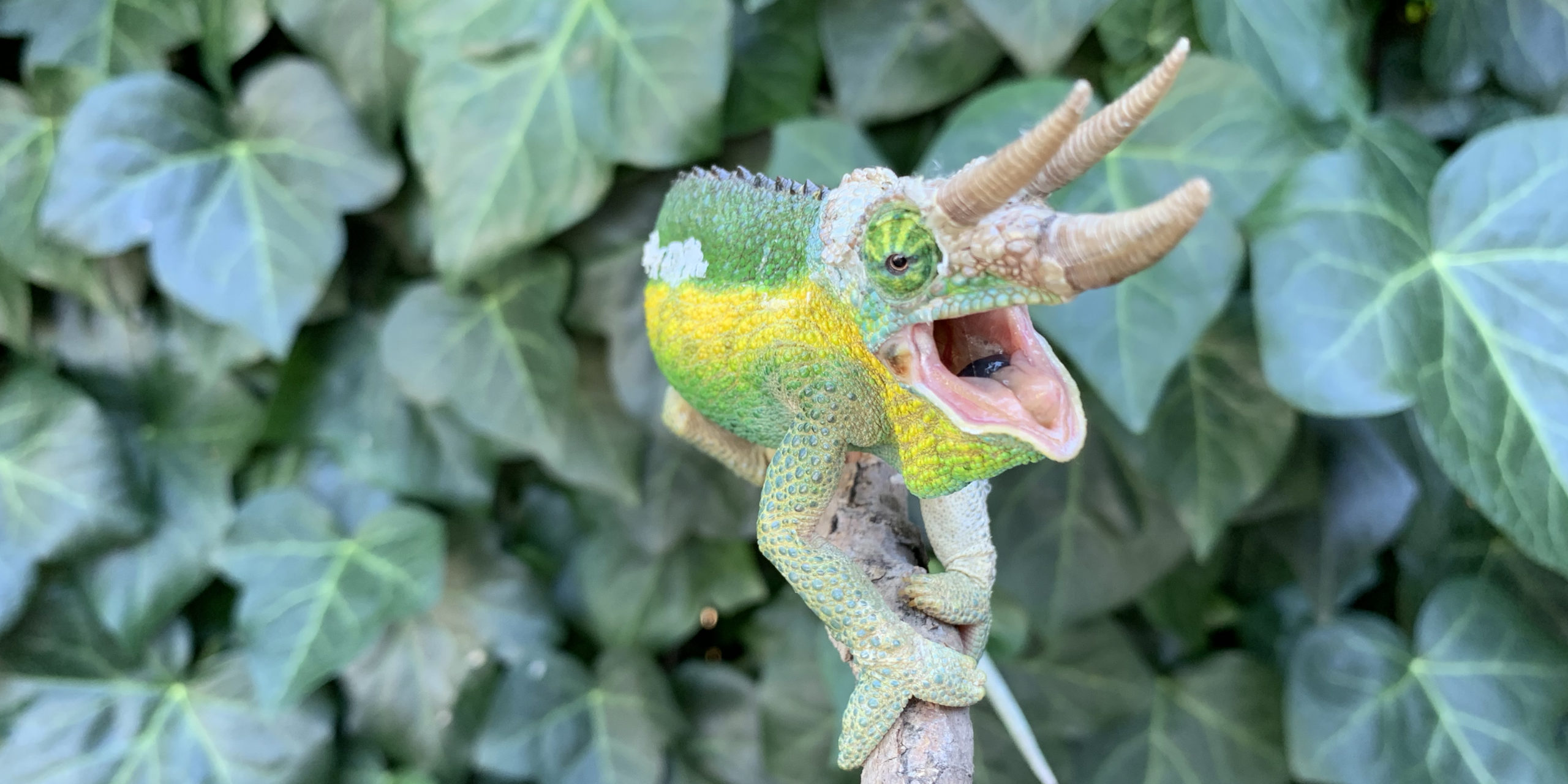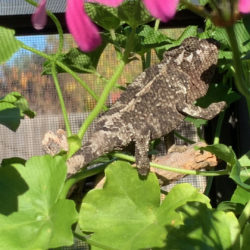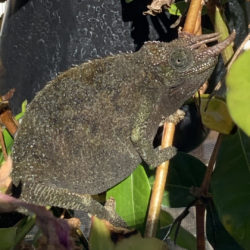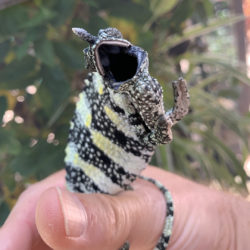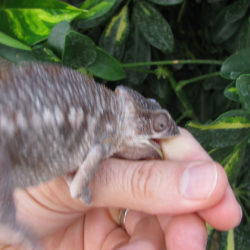What is your chameleon telling you?
This class consists of a list of behaviors that you might run into with your chameleon. This isn’t necessarily a class to go through from start to finish, but just peruse the behaviors that are listed just to be ready when they happen! And then you know where you can come for an explanation. This class goes hand in hand with the Medical conditions class which is next. In deciding which class to put a certain behavior/situation in a judgement call was made as to whether it was a choice made by the chameleon (behavior) or something that happened to it (Medical). If something is happening and it isn’t listed here then check the medical side!
But before we get to individual behaviors we will meet the three major phases of chameleon life – The Contented Chameleon, The Scared Chameleon, and The Sick Chameleon. By knowing, even at a high level, when you should be concerned, you can get ahead of problems before they are too advanced to treat.
The Content Chameleon

This is a content chameleon. He is relaxed, but alert. He has a powerful grip on the branches that he perches on and, if disturbed, slinks away into the foliage quickly and with great control.
Eyes are constantly scanning the area. Eyes are alert. A healthy chameleon does not have closed eyes during the day.
The tail can be tightly coiled under him or being used as balance in the branches.
You will get use to his resting colors and you will learn what he does when he is stressed. Some chameleons get dark and some chameleons show dramatic spots. What your chameleon shows is a combination of species and individual genetics.
The Scared Chameleon
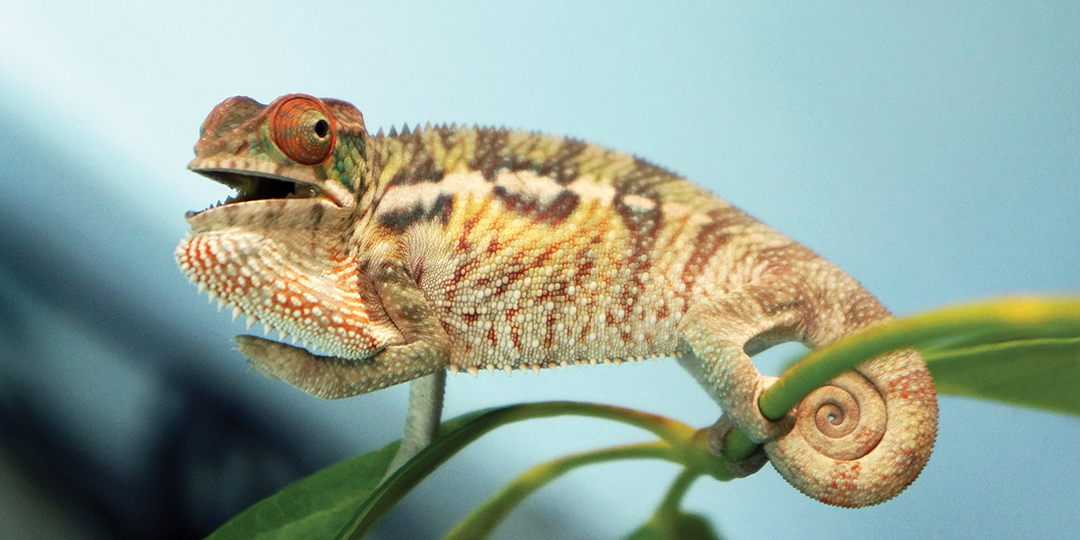
It is critical to learn the signs of a stressed chameleon. The pictured chameleon is showing all the typical signs. He is showing the following behaviors:
- Brightest Colors to warn away the intruder
- Flattened Body to look as big and imposing as he can
- Puffed Out Gular (Throat) to look as big as possible
- Gaping Jaws to make it clear he means business.
- Front leg up in a protective position.
If you seen any of these signs you know you have a scared chameleon that feels threatened. Ignoring these signs and continuing with whatever you are doing will result in either a bite or a chameleon that gives up and takes on the sick chameleon traits which we will look at next.
The Sick Chameleon
A chameleon will try and hide sickness as long as possible. This is our challenge as chameleon keepers, we must act before we are sure. This sometimes results in wasted vet visits, but those are my favorite types of vet visits.
The most obvious sign of trouble is eyes closed during the day. Add to that sunken eyes or else dark or stressed colors and you know something is wrong. Physical signs such as nose pointed up in the air or, worse, gaping to breathe and it is past time for a veterinary visit.

The chameleon eye structure is a great way to gauge the health of the chameleon. Although the cause is often challenging to determine, you can at least know something is off. Chameleons closing their eyes or “sleeping” during the day is one of the most common warning signs of a health or stress issue chameleon keepers encounter.

Sunken eyes are another warning sign. Though this one can be caused by a number of issues from benign to critical so, like any of these situation, the eye condition is not the smoking gun, but the signal that more clues need to be found.

A compromised immune system increases the chance that bacteria will take hold and start an infection. As the most vulnerable location for the chameleon is their lungs, where they breathe in bacteria every breath, respiratory infections are often the result. The first signs of respiratory infections are either the closed eyes or the sticking of the nose into the air. Infections must be dealt with in themselves, but care cannot be considered complete until the source of the lower immunity system is discovered and corrected.
The Chameleon Behavior Reference Encyclopedia
If you have a behavior that is not found here then please check the Medical reference in case it has been listed under that heading.
Navigation
Chameleon Behavior is a class that is part of the Term 1: Getting Started With Chameleons coursework which gives you a basic exposure to the important issues in chameleon husbandry. Learning about chameleon mannerisms is a stage that every chameleon keeper needs to go through! At times it is hard to tell whether you are looking at a behavior or a medical condition. Generally speaking, if the chameleon has a choice as to what they are doing I place it in the Chameleon Behavior section. If it is something that is happening to the chameleon I place it in the Basic Chameleon Medical Section section. If you did not find a match in in this course then please check the Medical section!

